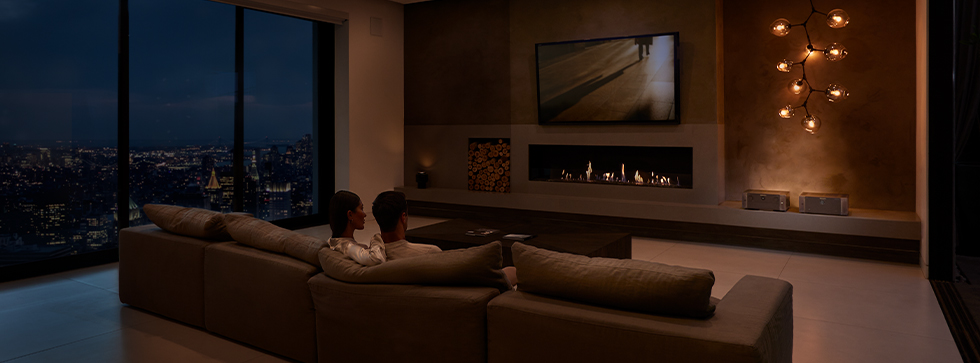
With more home releases taking over the film & entertainment world and almost every classic flick from the past at our fingertips, more and more people are looking to create their own home cinema experience to enjoy their favourite features or new releases.
Creating a dedicated home space to watch your favourite films and programmes saves you from rushing home to get ready, travelling to the cinema and enduring all the bells, whistles and complications that come with it. With a home cinema set-up, you can simply put your feet up and enjoy your chosen movie peacefully while still experiencing the highs and lows at a similar scale to the theatre.
When you’re dreaming up your perfect home cinema, there’s a key distinction to consider. Do you want to simply upgrade your home entertainment system and bring the feel of the cinema to your living room, or are you going all in and building a dedicated home cinema as a separate space?
At Peter Tyson, our guide will take you through exactly what you need for both methods so you can weigh up your budget, space and more and decide what suits you best. So roll out the red carpet in the comfort of your home and read on to develop your private home cinema.
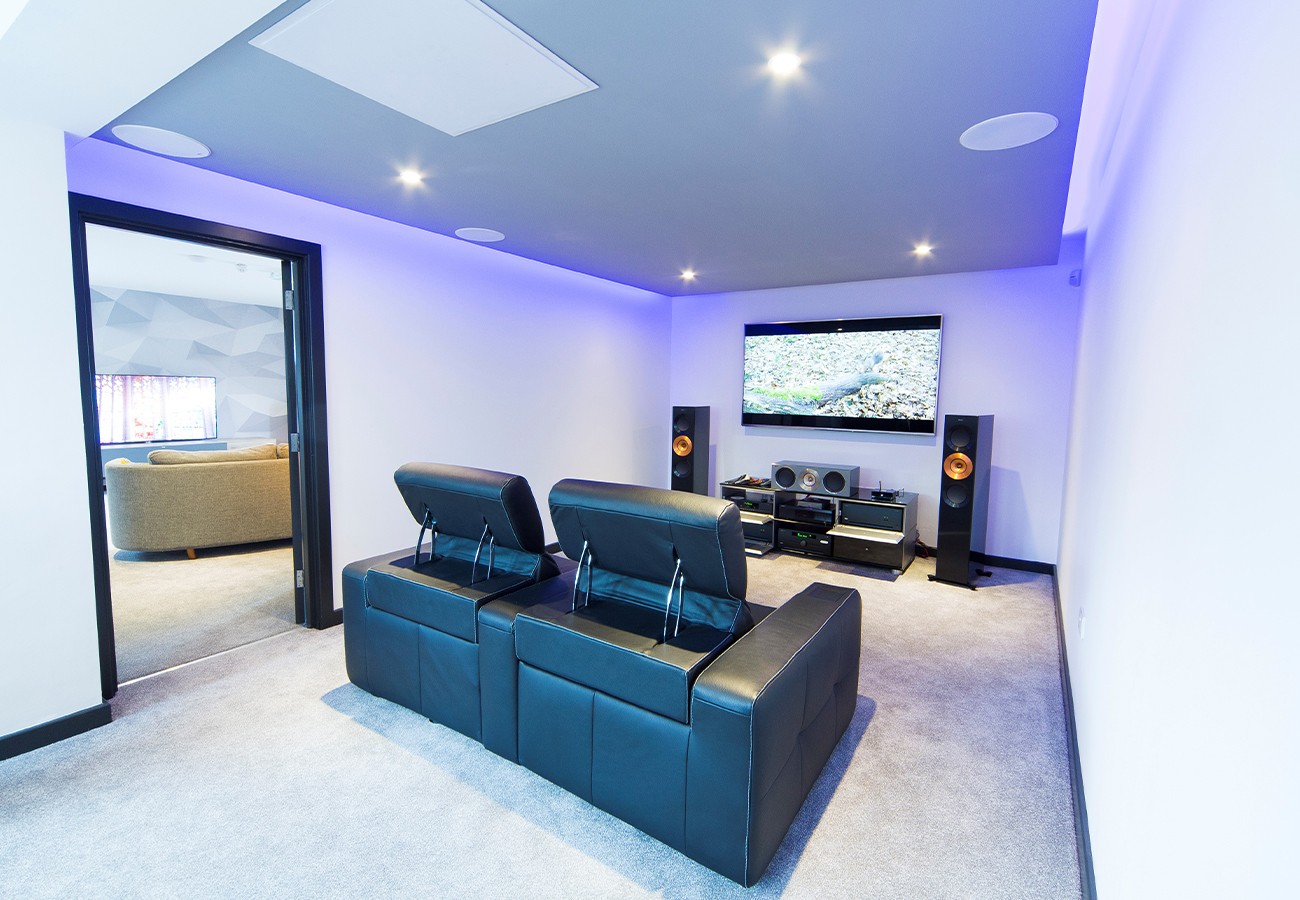

Table of contents
-
What size screen do you need for a home cinema?
-
Where should speakers be positioned in a home cinema?
-
Soundbars or surround sound for a home cinema?
-
Best lighting and furniture for a home cinema
-
Our recommendations
-
Home cinema support at Peter Tyson
What size screen do you need for a home cinema?
Let’s start with the most important factor in a home cinema: the screen. Of course, the big screen is what makes the cinema experience. Watching a film on such a grand surface makes every big moment feel bigger; every tug on the heartstrings hits that bit deeper, so how do you recreate that at home?
Screen for a home entertainment upgrade
If you want to upgrade your home entertainment system to create a cinema-esque environment, do you stick to a trusty TV or switch to a projector?
Although plenty of large TVs are available, projectors win the size contest convincingly. Our largest TVs are between 77-98”, which, depending on the size of your room, could fit your space perfectly. Alternatively, our projectors at Peter Tyson can easily go beyond 100” in screen size.
Your space may be unable to accommodate over 100” worth of screen size or a projector being mounted on the wall. This is where short-throw projectors can become your ideal choice, with the ability to enjoy screen sizes upwards of 80” from just centimetres away.
Budget wise, a large TV could cost you in the region of £3,800 on average, although many are available for less. A short-throw projector costs approximately £1,700; if you’re getting a projector screen to go with it, the average total price would be just over £2,500.
We’re giving this one to the projectors.
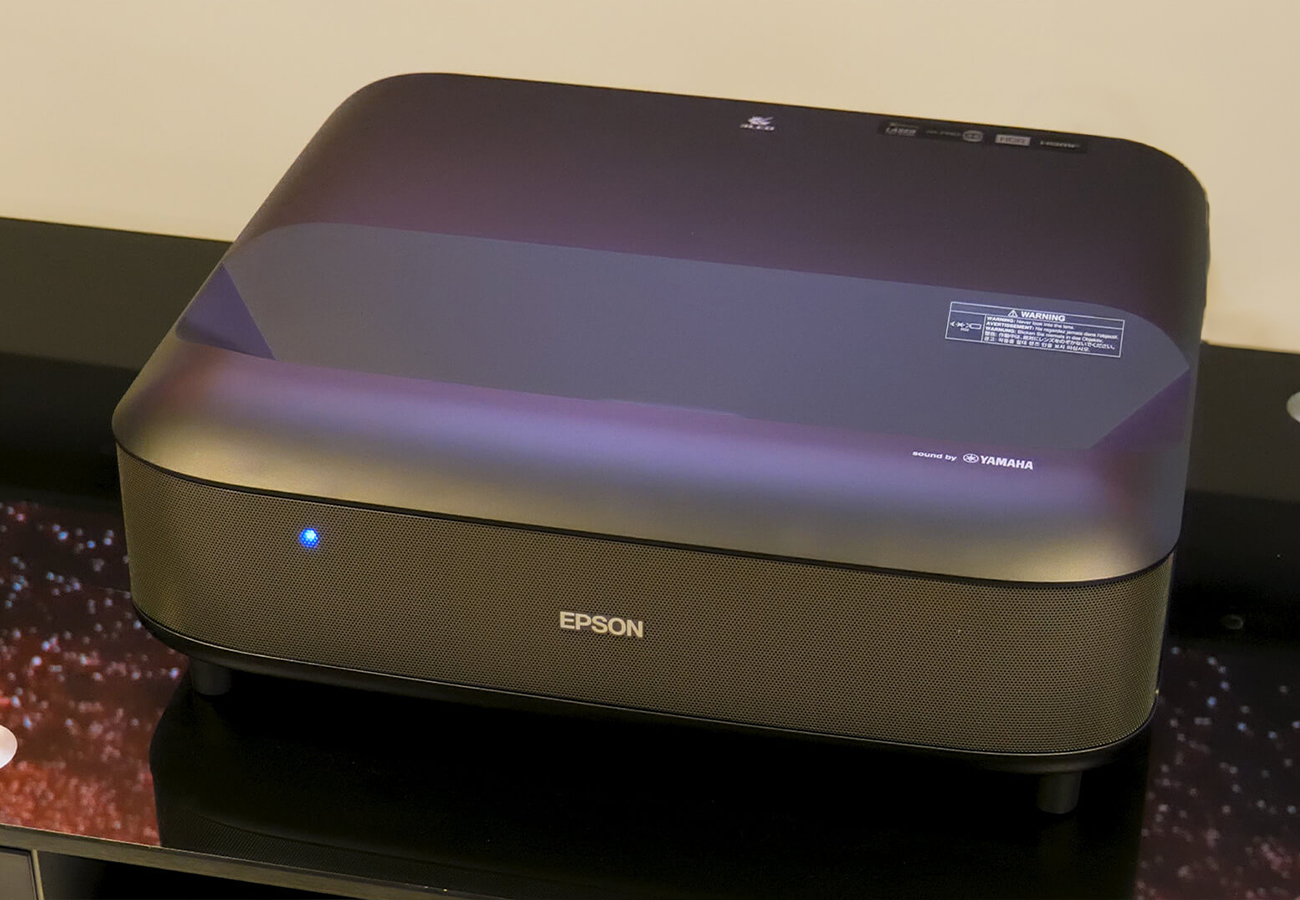

Screen for a converted home cinema
For a fully converted home cinema, it isn’t a question of projector or TV. It’s what size projector screen you’ll need. If you have the space and budget to make the home cinema of your dreams, you want a large room with a high ceiling. Medium-sized cinema rooms can often sit around 10x12ft, while a large home cinema should be at least 15x20ft.
The upgrade in size opens your scope to a true home cinema projector. Get cinema-quality pictures with 4K projectors available at various prices, depending on your budget.
How far away should you sit from your home cinema screen?
To achieve the best viewing experience, you'll need to know where best to place your seating. Of course if you've got an over 100" screen, you don't want the screen a hair's breadth away from your eyes, nor will you want to be right at the opposite end of the room from a smaller screen.
A tried and tested formula measures your screen diagonally, in inches, and divide that number by 0.84 to work this out manually. You can then convert your result from inches to metres to calculate your distance. For example, 85-inch screens should be 2.5m away based on this method, while you should sit 3m away from 100" screens.
View our reference guide to plan your home cinema seating appropriately.
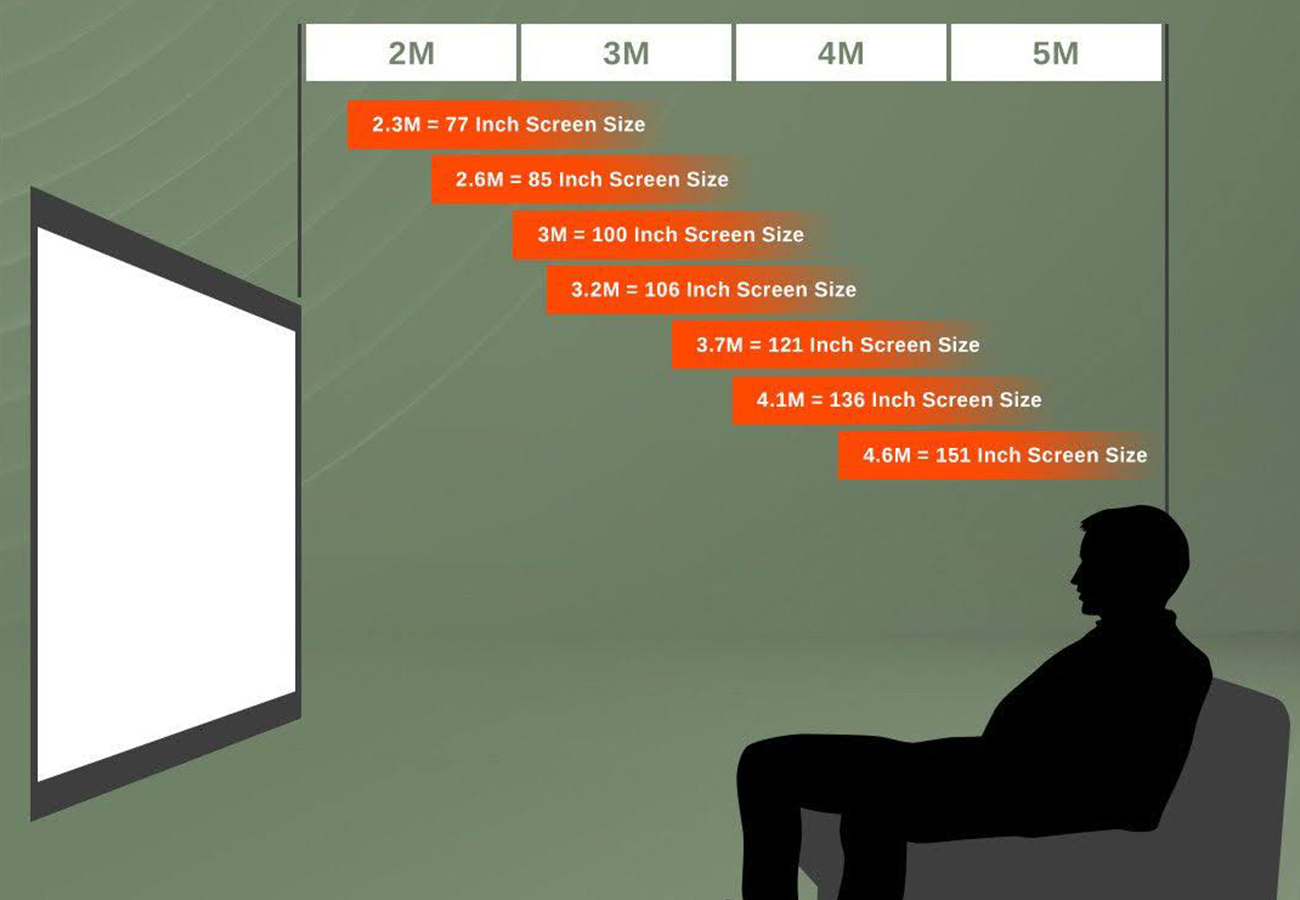

Where should speakers be positioned in a home cinema?
Sound is just as important as picture quality when building your dream home cinema. Think of those incredible scores that build and crescendo, perfectly capturing the feeling of the film. Those scores, along with impactful line delivery and sharp sound effects, only resonate so much due to the quality of the speakers you hear them through.
Adding speakers to your living room home cinema upgrades your set-up massively. Balance is key to achieving the ultimate audio experience, so placing speakers on either side of your screen is essential. Place a centre channel or soundbar on your stand below the screen if you use a TV.
Consider pulling your furniture slightly away from the back of the room to reduce reverberations from the wall.
Full conversion home cinema rooms open the door for several audio opportunities. In-wall & in-ceiling speakers provide incredible quality without wasting valuable space or impacting your decor. Utilise overhead and surround sound to engage further with your favourite films, or if you can’t install directly into the walls, try our on-wall speakers that add to the cinema look.
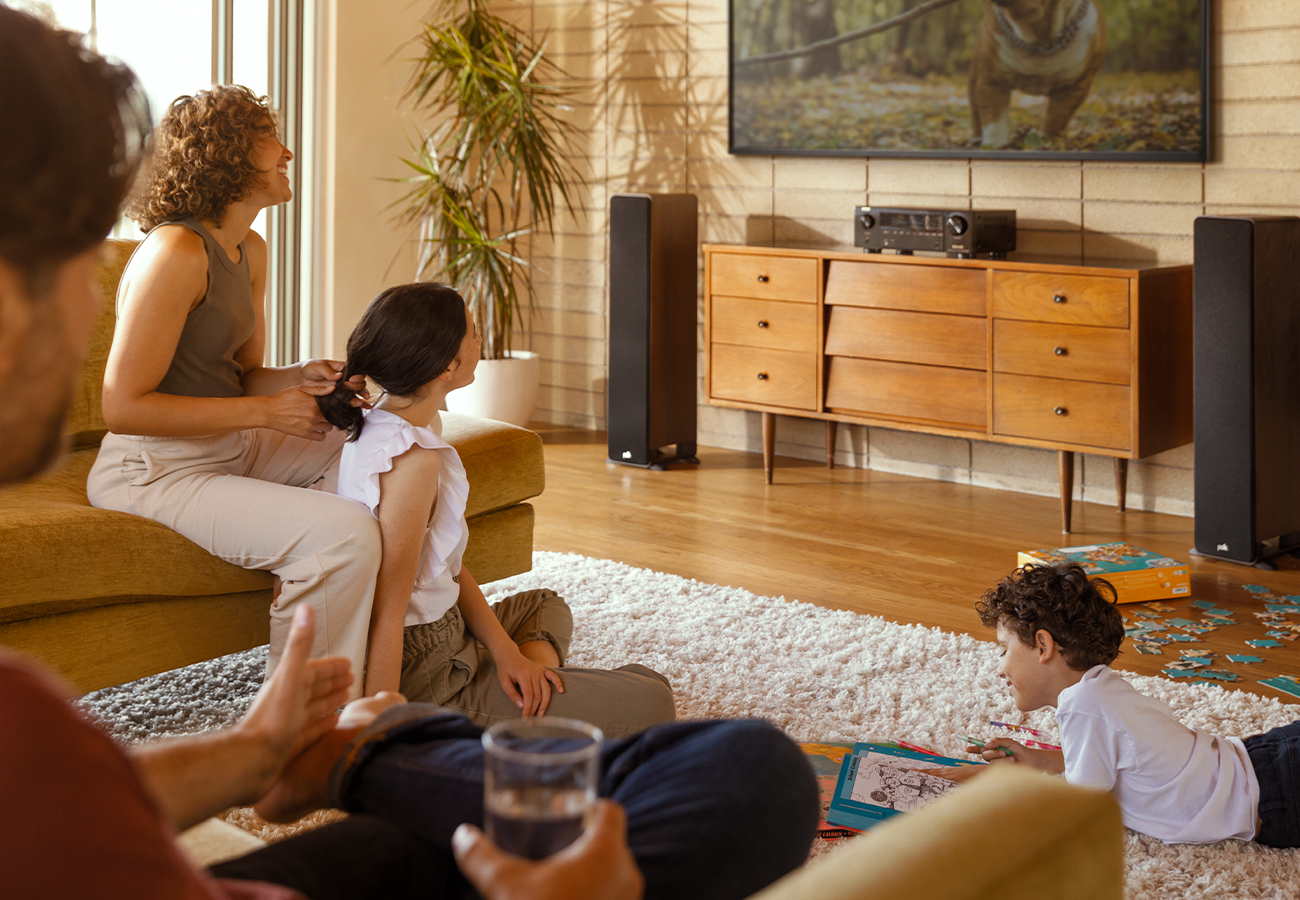

Soundbars or surround sound for home cinema?
Another key audio decision in the home cinema process is what type of sound you want. Surround sound set-ups such as 5.1 systems and soundbars are two of the most popular audio options.
Both provide an excellent audio experience, so what does each option excel at?
Soundbar pros
- Ideal for smaller spaces
- Non-intrusive, subtly blends into the room
- Affordable from brands like Hisense, Samsung and JBL
- Far better audio capabilities than TV speakers
Soundbar cons
- Can distort at high volumes
- Less cinematic feeling
Surround sound pros
- Clear and accurate sound true to the human voice
- A surround system allows the centre channel to perform uninterrupted
- Immersive audio experience
- Affordable options available
- Recreates a real cinematic environment
Surround sound cons
- High-quality systems can be expensive
- Complex to set up for beginners
- Uses plenty of space
Apply these points to your budget, space and home cinema aspirations to decide which is more suitable. Smaller spaces can benefit from the lack of wires and hefty speakers that come with surround sound, while larger rooms may feel empty if the soundbar’s capabilities don’t match the scale of the set-up.
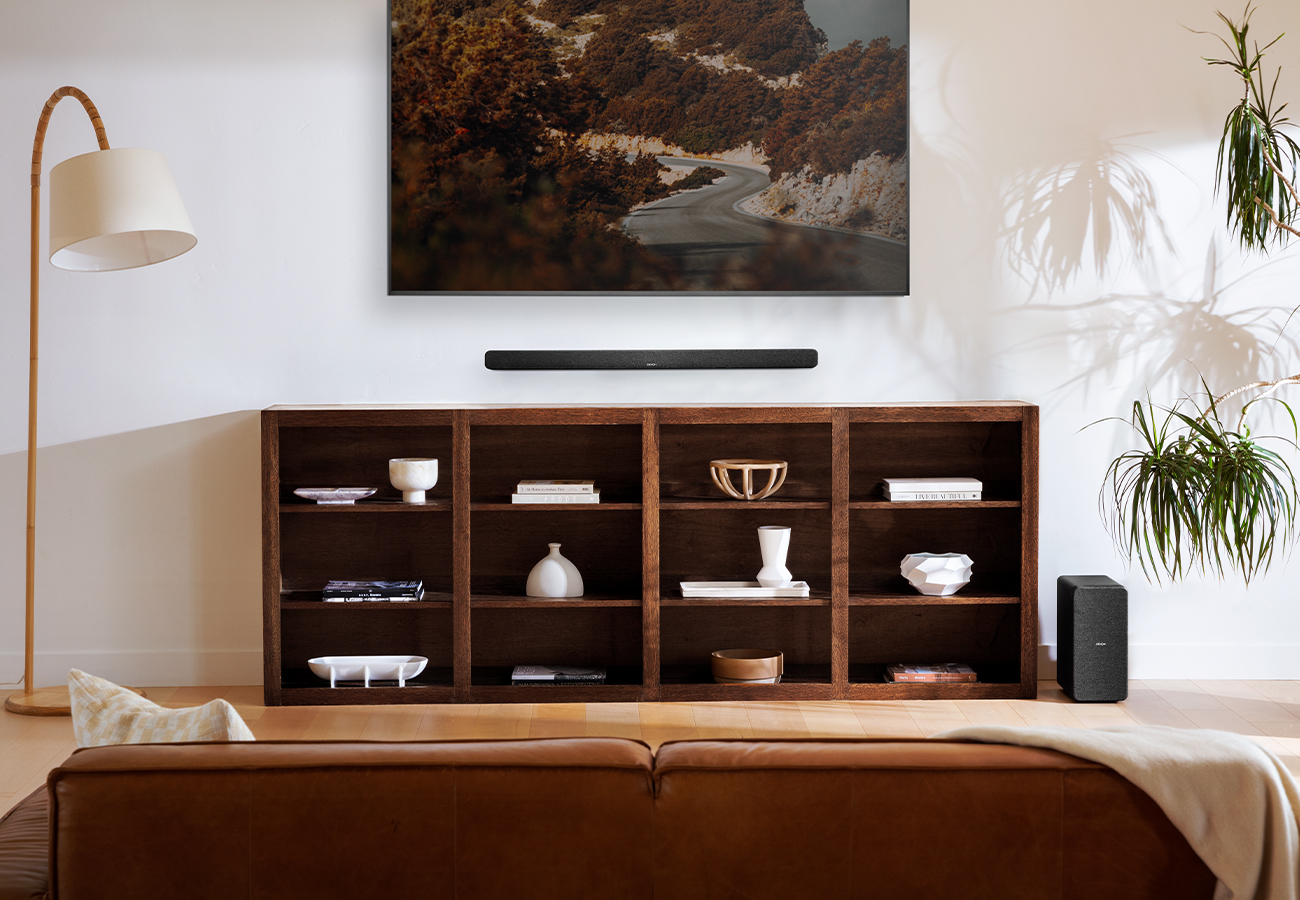

Best lighting and furniture for home cinema
Time for arguably the most exciting part of the home cinema-building process: lighting and furniture. While it might not sound thrilling on paper, this is your chance to make atmospheric and comfort choices that make a real impact. It’s also an opportunity to personalise your cinema room how you see fit, making it your own.
Set the mood to your liking with downlights or add to the atmosphere by incorporating LED strip lights behind your screen that match the colours shown in the film. A simple, dim table lamp for smaller rooms can prevent things from feeling too dark without interrupting the cinematic feel.
Furniture, of course, depends on your space. One of the biggest reasons to commit to a home cinema is the comfort element, so make sure you’ve got a sofa or chair that you’re happy to lounge in for a few hours while you enjoy the film.
If you’re ambitious about your hopes for your converted home cinema, you could add row seating to create a true feeling of going to the pictures within your home. Luxury sofas featuring extended cushioning make for the perfect cosy viewing spot for a home date night.
To add that extra personal touch, why not add some posters of your favourite films to the walls?
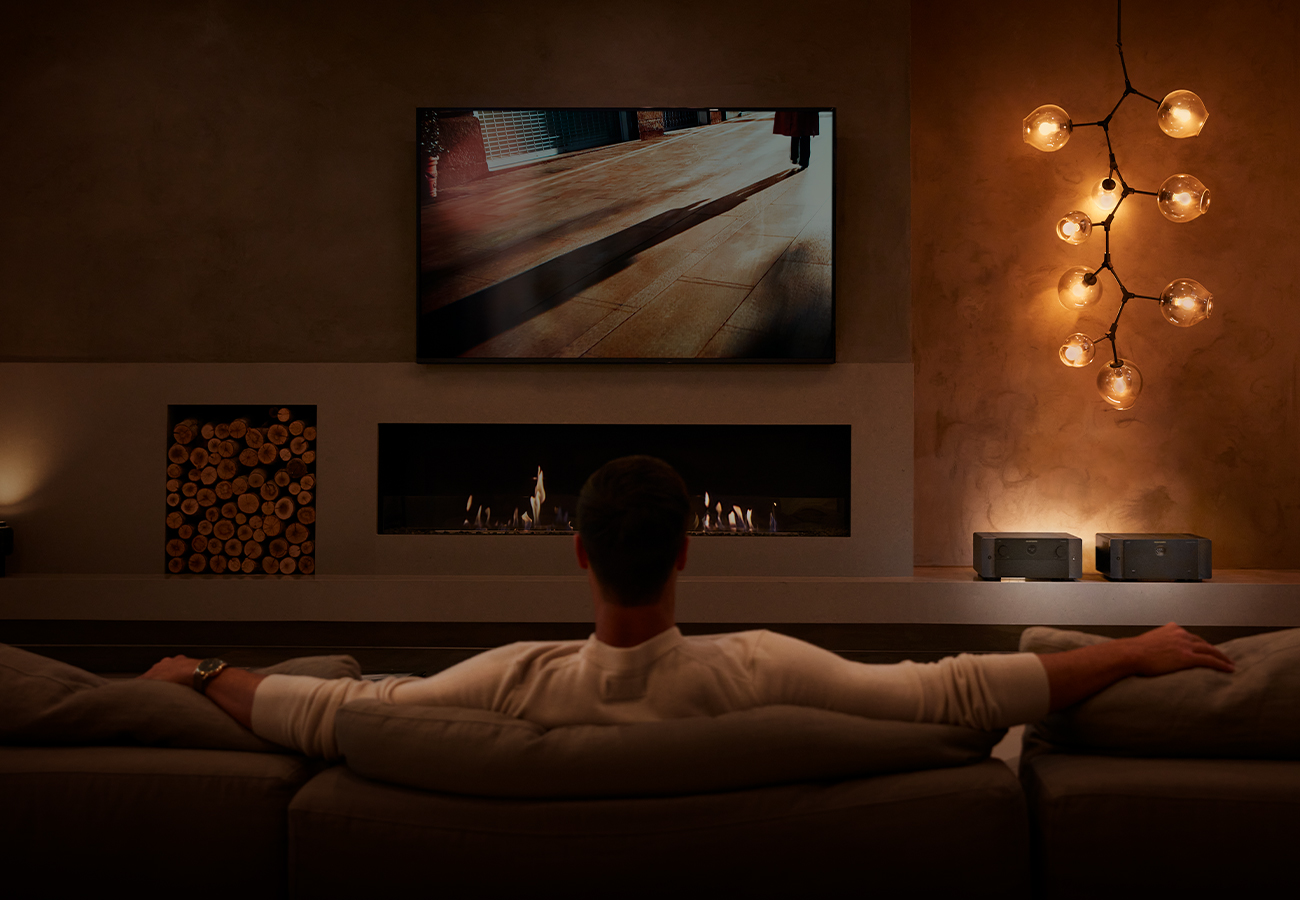

Home cinema support at Peter Tyson
We hope this guide has given you the insight you need and, most importantly, gotten you excited to create your own home cinema. Start planning which films will be screened first in your new cinema shrine, and you’ll enjoy the wonders of movies from home in no time.
If you require further support or have any questions, come see us in-store or contact us, and we’ll be happy to help. We’ve made a name for ourselves for our open and helpful attitude to customers, old and new, so don’t be shy!

